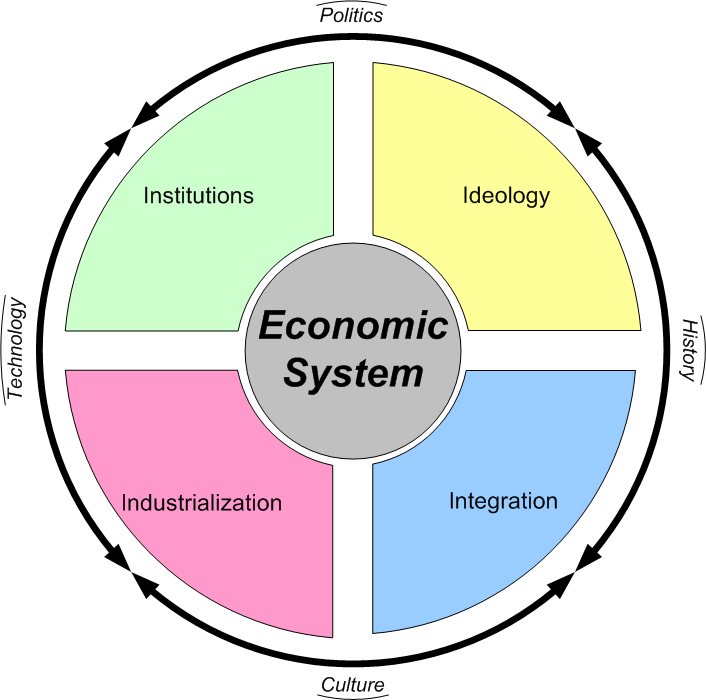what is the economic system in the united states

The United States is a country with a dynamic economy that has had a significant impact on global economics. To understand the economic system of the United States, it is essential to examine its different components and how they work together. This post aims to provide a comprehensive overview of the US economic system, its components, and how they contribute to its success.
Understanding Economic Systems – United States’ Economics

Abstract
The United States is home to one of the world’s most advanced and complex economic systems. The US economy is characterized by a mix of free-market principles and government regulations that provide the necessary framework for businesses to thrive. Understanding the economic system of the US is crucial for anyone interested in doing business in the country or investing in its markets.
Introduction
The economic system of the United States is often referred to as a mixed economy. It combines elements of both market economies and command economies. The free market is an essential feature of the US economy, allowing firms and individuals to make economic decisions based on their self-interest. However, the government also plays a significant role in regulating economic activities.
One of the most critical components of the US economic system is the private sector. The majority of businesses in the United States are privately owned, and their operations contribute significantly to the overall economy. The private sector has the freedom to make decisions about how to operate its businesses and the goods and services to offer. However, regulations regarding safety, the environment, and other factors are in place to ensure that businesses operate within certain parameters.
The US economy is also characterized by a high degree of specialization. Different sectors of the economy are highly specialized, with different businesses focusing on specific areas. The agricultural sector, for example, is highly specialized, with businesses focusing on crops such as corn, soybeans, and wheat. The manufacturing sector is also highly specialized, with different businesses focusing on specific products, such as automobiles or electronics.
Content

Regulatory Framework
The US government plays a crucial role in regulating the economy, ensuring that businesses and individuals operate within certain parameters. Regulations are in place to ensure that the environment is protected, consumer safety is upheld, and workers are treated fairly. The regulatory framework includes a range of government agencies that oversee different sectors of the economy, such as the Environmental Protection Agency (EPA), the Occupational Safety and Health Administration (OSHA), and the National Labor Relations Board (NLRB).
Financial System
The US financial system is critical to the functioning of the US economy. The system includes a range of financial institutions, such as banks, insurance companies, and investment firms. The US financial system is highly regulated, with a range of laws and regulations in place to ensure its stability and security. The Federal Reserve, the central bank of the United States, plays a crucial role in maintaining the stability of the financial system.
International Trade
The US is one of the world’s largest trading nations, with a high volume of trade with other countries. International trade is crucial to the US economy, with exports of goods and services contributing significantly to the country’s GDP. The US is a member of several international organizations that regulate trade, including the World Trade Organization (WTO) and the International Monetary Fund (IMF).

Education System
The US education system is critical to the success of the economy, providing businesses with a highly skilled workforce. The education system includes primary and secondary schools, colleges, and universities. The US has some of the world’s most prestigious universities, including Harvard, Yale, and Stanford. The government also provides financial aid to students to make education more accessible.
Infrastructure
The infrastructure of the US is a critical component of its economic system, providing businesses with the necessary support to operate. Infrastructure includes transportation systems, such as highways, railroads, and airports, as well as communications systems, such as telephone and internet networks. The government plays a significant role in maintaining and improving the infrastructure of the country.
Conclusion
The United States is home to one of the world’s most complex and advanced economies. The US economy is characterized by a mix of free-market principles and government regulations that provide the necessary framework for businesses to thrive. The private sector is a critical component of the economy, with businesses operating within strict parameters to ensure the safety of the environment, individuals, and the labor force. The US education system provides businesses with a highly skilled workforce, and the infrastructure of the country supports the operations of businesses. Understanding the economic system of the US is crucial for anyone interested in doing business in the country or investing in its markets.

Source image : www.slideshare.net

Source image : thenewsandviews.com

Source image : onlineeducationforteachers.blogspot.com






